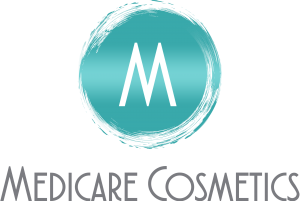Hyperpigmentation is a common skin condition where patches of the skin have become darker in colour compared to the surrounding area of skin.
It is caused by an excess production of melanin which is the pigment that gives skin colour. The result is localised dark spots or patches on the skin. They can range from being light brown or dark or black in colour and can vary in size and shape. Examples of hyperpigmentation are freckles and sun spots.
Forms of Hyperpigmentation
There are a number of different factors that can alter the production of melanin in your body or cause hyperpigmentation.
Hormonal
When oestrogen is increased it can lead to Melasma which causes large areas of skin to darken. This is common during pregnancy and when starting the contraceptive pill. Many women notice flat, dark patches of skin developing. This condition can resolve itself once the hormones have been rectified and settled down. This is usually after birth or coming off the hormonal contraceptive. It can take months or years for the hyperpigmentation to fade completely without treatment.
Inflammatory
Once a pimple or bite has healed, post-inflammatory hyperpigmentation (PIH) can occur. This is the skin’s natural response to any injury that causes the skin to become inflamed. The lesion will begin to heal and sometimes the skin can produce too much melanin. This makes the area appear darker. PIH can improve overtime but again it can take months or years depending on the severity.
Sun-induced
Age spots do not necessarily appear at the same time you are exposed to the sun. Sun damage accumulated when you are in your youth can start to surface when you are 30-40 years old. This shows the importance of applying a sunscreen every day as protection.
Can you prevent Hyperpigmentation?
It is important to protect your skin EVERY SINGLE DAY. The best way to do this is by wearing a sunscreen with at least SPF30 in it. You should be wearing sun hats and glasses to enhance your protection when in the sun and try to seek shade where possible.
For those people who suffer from blemishes – do not pick your skin. You can increase the risk of post-inflammatory hyperpigmentation.
Are there any treatments for this?
At Medicare Cosmetics we offer a range of chemical peels suitable for treating different skin complaints. The range of peels are by Mesoestetic. For pigmentation we recommend the Melanostop peel.
Benefits include:
- Removes freckles
- Helps with sun damage and pigmentation
- Reduces dull skin
- Balances uneven skin tone
- Suitable for areas of the body with pigmentation
Other treatments that we have to offer range from IPL (Intense Pulsed Light) which breaks down the pigmentation at a deeper level and the Cryopen. This is a freezing treatment.
It is always best to book your FREE skin consultation to determine which treatment or products are going to benefit your skin the most. Sometimes it can be a combination of treatments.

